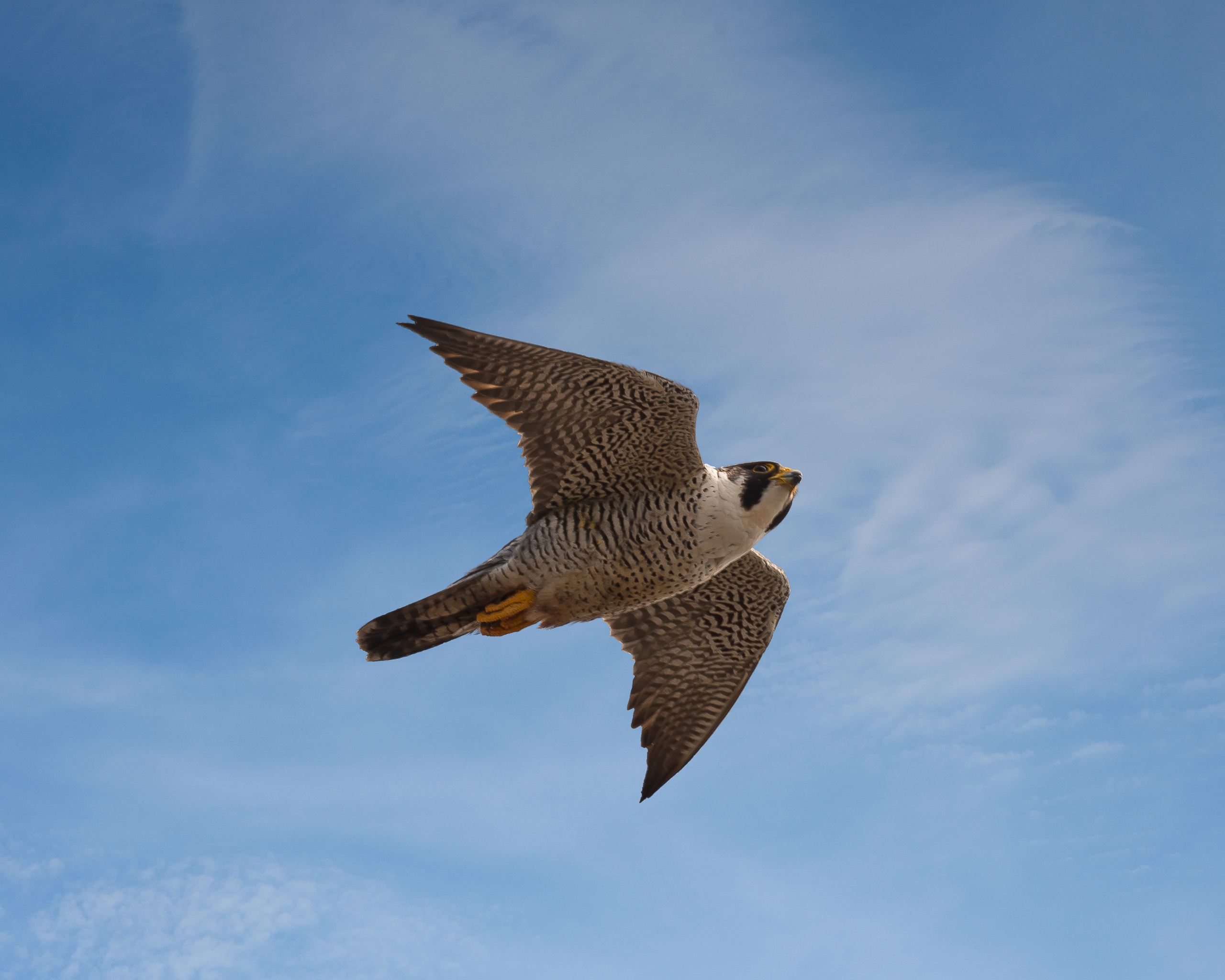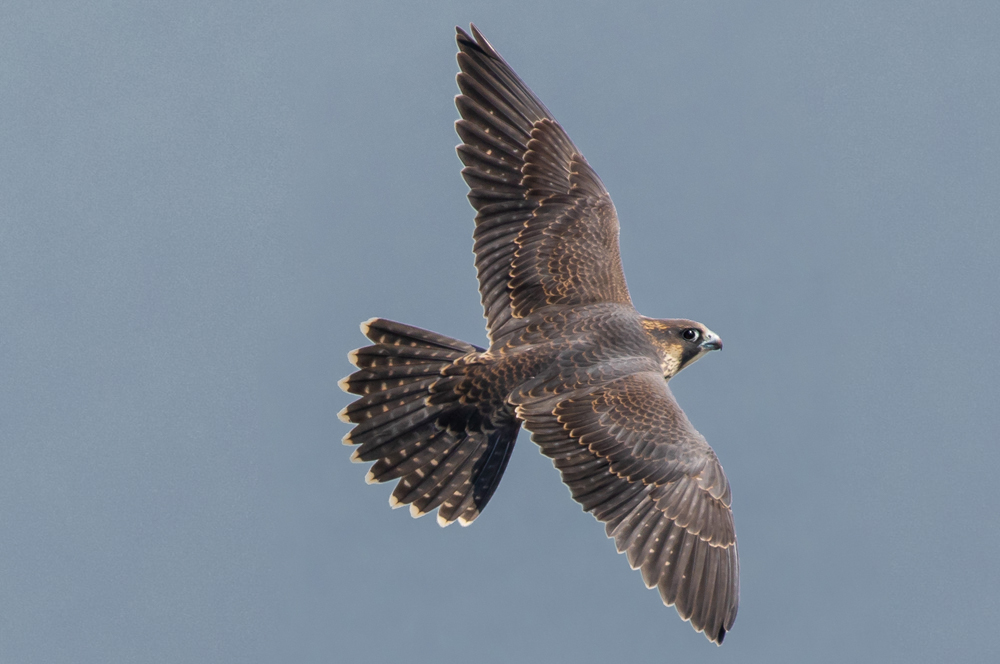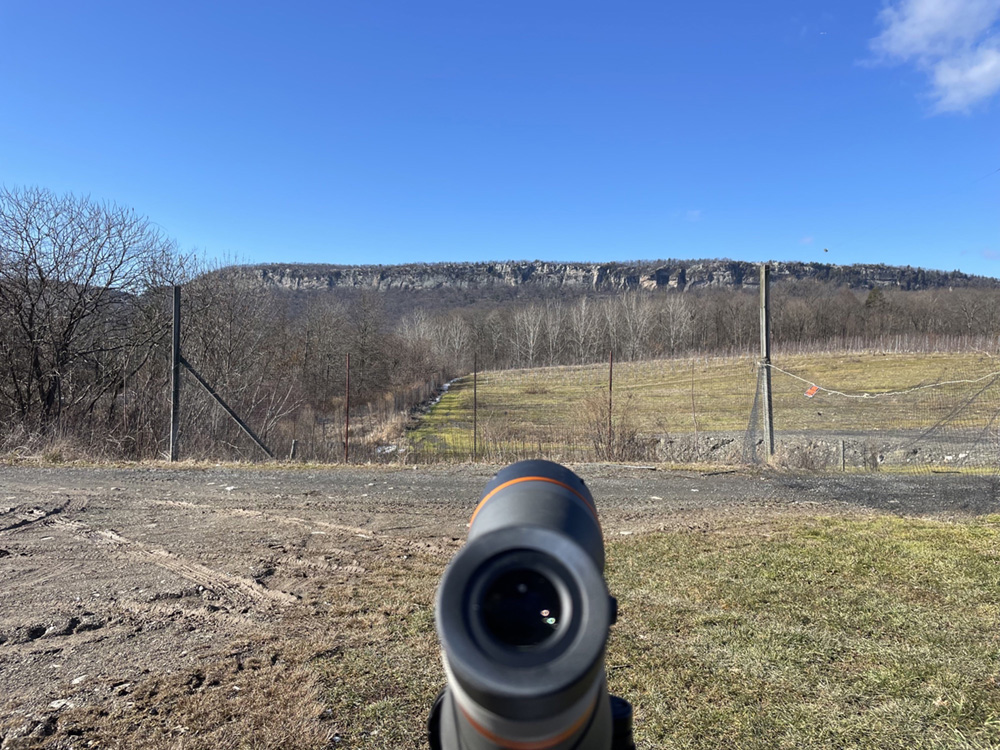2024 PEREGRINE WATCH SEASON
Based on our experience, current scientific research and raptor protection strategies of conservation partners, the Preserve will continue applying a responsive management approach during the early breeding season to optimize successful eyrie (cliff nest) site selection.
Through our Peregrine Watch program, we now have confirmed nesting activity in the Trapps. As a result, we are revising our temporary climbing and bouldering closures as follows effective Saturday, April 20th:
-
-
- Trapps Climbing – No climbing from and including Easy Verschneidung (5.3) to and including Knockout Drops (5.11b).
- Trapps Bouldering – No bouldering from and including Atlas (V10) to and including Mini (V1). Exception: Andrew Boulder and Slug’s Life Boulder problems starting from Undercliff Carriage Road will be open. To minimize noise close to the eyrie, at any given time no more than 10 people can be present at this location.
-
Please note that if consistent defensive behaviors are displayed near the closure boundary, these closure parameters may require adjustment.
Signage about the closures will be posted at the Trapps Cliff. Closures will not be implemented at Millbrook Ridge or Bonticou Crag, but Peregrine Watch volunteers and staff will continue to monitor peregrine falcon eyrie sites at all three cliffs.
As a reminder, peregrine nesting season may possibly run through late summer. We will keep you updated as the season progresses and share our latest observations with you.
Thank you for your support of our conservation mission as we work together to enable a successful breeding season and help ensure the continued recovery of these remarkable raptors.
Click here to learn more about peregrines on the Shawangunk Ridge.
Peregrine Watch Observations

4.19.24 – Peregrine Watch 2024: Mohonk Preserve Conservation staff and Peregrine Watch volunteers have confirmed nesting peregrine falcon activity in the Trapps.
4.8.24 – Preserve Peregrine Cam: Two peregrine falcons are seen feeding on a northern flicker in the Shawangunk Ridge.
3.14.24 – Preserve Peregrine Cam: Tune in with your sound on for some peregrine falcon calls! This footage shows a pair of peregrine falcons on an eyrie in the Shawangunk Ridge talking to one another. Falcons will use various different calls to signal their presence to potential mates, communicate needs to their partners or to establish territory.

3.1.24 – Peregrine Watch 2024: The 2024 Peregrine Watch season started with a successful volunteer orientation on February, 14th with 18 new volunteers signed up. Overall, the group has 32 volunteers who will monitor the ridge for peregrine falcon activity.
2.5.24 – Preserve Peregrine Cam: A peregrine falcon takes flight off an eyrie on the Shawangunk Ridge. Did you know the peregrine falcon is considered the fastest member of the animal kingdom? Peregrine falcons are very fast fliers, reaching speeds up to 69 mph in direct pursuit of prey and 200 mph when hunting from high above! These amazing high-speed dives are called hunting stoops.
1.16.24 – Preserve Peregrine Cam: A peregrine falcon preening their feathers to keep them clean.

1.18.24 – Peregrine Watch Volunteer Orientation: For information about participating in our Volunteer Peregrine Watch program, we are holding an orientation session on February 14 from 6:00 PM – 7:30 PM. Click here for more information on this and our other Volunteer opportunities.
12.21.23 – Preserve Peregrine Cam: Enjoy this video of peregrine falcon activity on the ridge.
